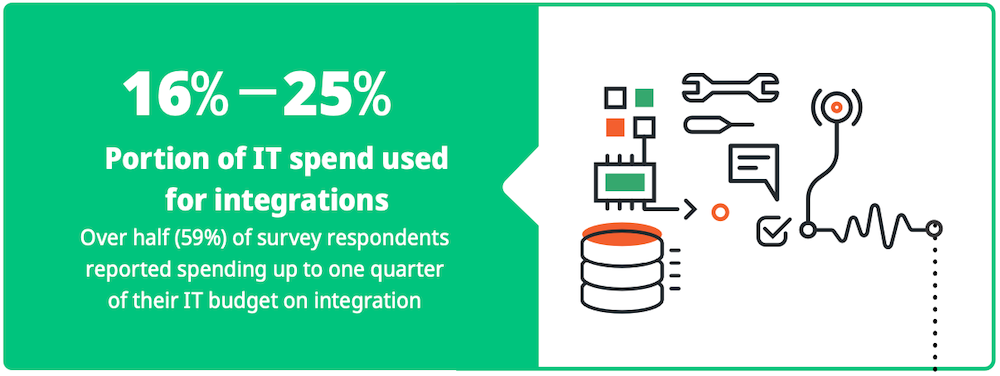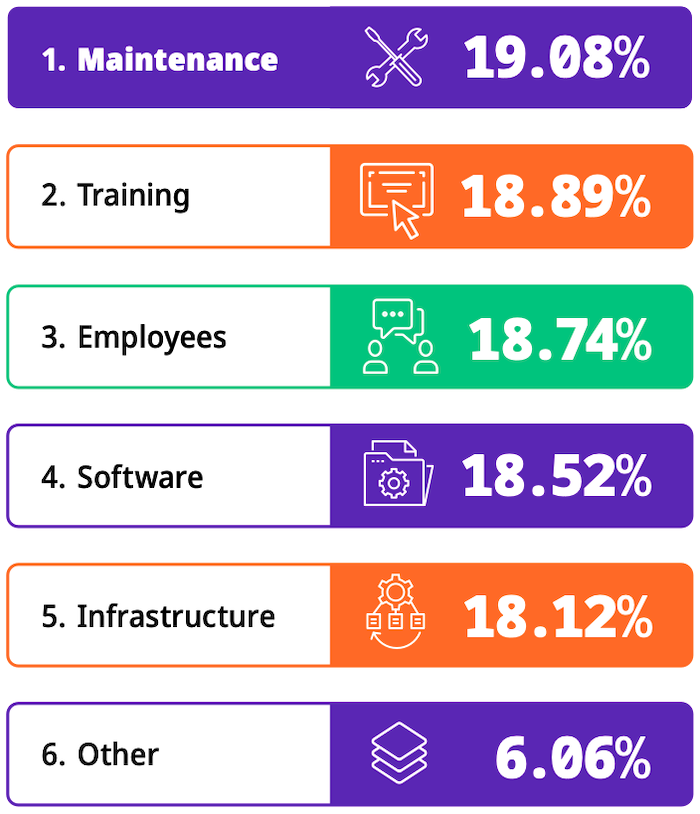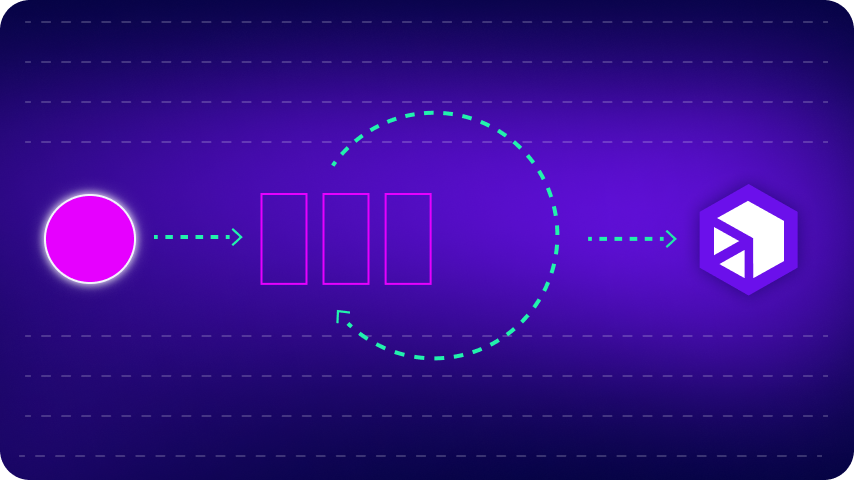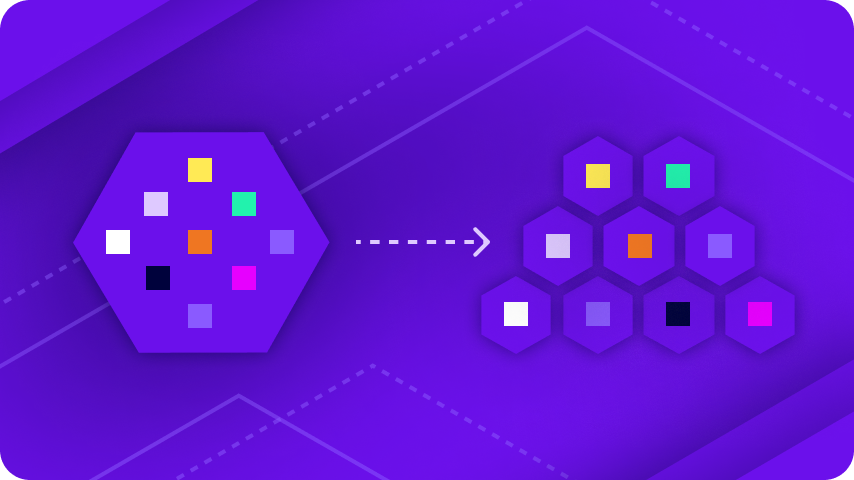May 23, 2023
The 2023 data is in, and Digibee’s second annual annual State of Enterprise Integration survey, is out! We reached out to more than a thousand enterprise IT professionals – from web developers and system architects to CTOs and CIOs – across North America to understand today’s integration trends, challenges, and opportunities.
Now we’re diving into some of the key findings with a series of blog posts – this one focuses on IT budgets and the cost of integration.
IT Budgets are on the Rise
Globally, IT budgets continue to grow. Gartner analysts estimate that IT spend worldwide will climb 5.5% this year to reach $4.6 trillion, despite general economic uncertainty. The upward trajectory of enterprise tech budgets is driven by a variety of factors, including:
- Rising cybersecurity concerns (49%)
- Efforts to improve operational efficiency (46%)
- Improvements to the customer experience (42%)
- Adoption of tools like integration to transform existing processes (41%)
Data from our report indicates that more than half of enterprise IT professionals expect to spend as much as 25% of that growing IT budget on integration.
Budget No Longer a Top Integration Challenge
In last year’s report, respondents cited budget concerns as the number one roadblock to their integration efforts. The 2023 report told a very different story – IT costs were not a factor at all when we asked about integration challenges. Security, dependence on legacy systems, and a lack of skills (among other things) displaced IT expense management.
Why the shift?
As we mentioned earlier, IT spending is on the rise, driven at least partially by the need to transform existing systems. In short, digital transformation and, relatedly, cloud migration are a pretty big deal right now.
When legacy systems start hampering organizations’ ability to leverage new tools – for efficiency, innovation, security, or customer experience – it makes sense that the purse strings begin to loosen. Digital transformation spending worldwide continues to climb annually and is on track to reach $3.4 trillion by 2026 – and since integration plays a key role in that process, budgets for integration increase as decision-makers view the cost of digital transformation as a necessity, rather than a nice-to-have.
So Where is All That Money Going?
Enterprises across North America are set to allocate billions (if not trillions) on integration this year. But what exactly are they spending it on?
Our data shows that integration budgets are pretty evenly divided into five key categories, with a small amount of spillover into a sixth extraneous category.
Integration Maintenance
Maintenance accounts for the biggest percentage of the cost of integration, although only by a slim margin. This isn’t really surprising when you consider that a staggering 98.5% of respondents reported rebuilding at least one integration in the past twelve months.
Training and Employees
The percentage of IT budgets dedicated to integration training is a point of contention since it’s one of the few spots where there’s room to tighten the belt. But while some integration platforms (like Digibee’s) are intuitive and accessible to even non-developers, others (that we won’t name) require extensive, costly training and certification.
Skilled IT experts aren’t easy to find – a trend that emerged in recent years and shows no sign of disappearing. As digital transformation and cloud migration become increasingly critical to growth and innovation, recruitment and retention of the staff needed to facilitate these changes become a higher priority in IT budgets.
Software and Infrastructure
We’ve already talked about how training costs can skyrocket when organizations adopt integration platforms that require special expertise or certification – that software also comes with licensing fees. The cost of integration tools is generally a non-negotiable cost of digital transformation.
Of course, there are several types of integration solutions businesses can choose from, and the price points vary considerably. iPaaS, which leverages cloud-based resources to offer platform-agnostic connections between disparate resources and systems, can cost a lot less than other tools.
Optimize Your IT Spend with Digibee’s iPaaS
The cost of cloud migration and digital transformation isn’t set in stone. While IT budgets continue to grow as enterprises place greater emphasis on technological innovation, there are still ways to optimize your IT spend when it comes to integration.
Digibee’s iPaaS offers an affordable alternative to many of the other integration solutions on the market.
- No need for time-consuming or costly training and certification
- Intuitive visual interface means even non-IT staff can create and maintain integrations
- As-a-service model eliminates costly upfront commitments, with maintenance included in the subscription
Need help controlling your digital transformation or cloud migration costs? Schedule time with our team, and let us walk you through how leveraging Digibee’s iPaaS could impact your IT budget.








